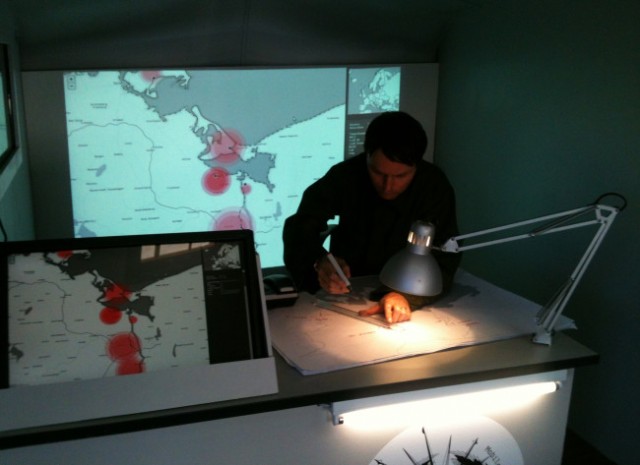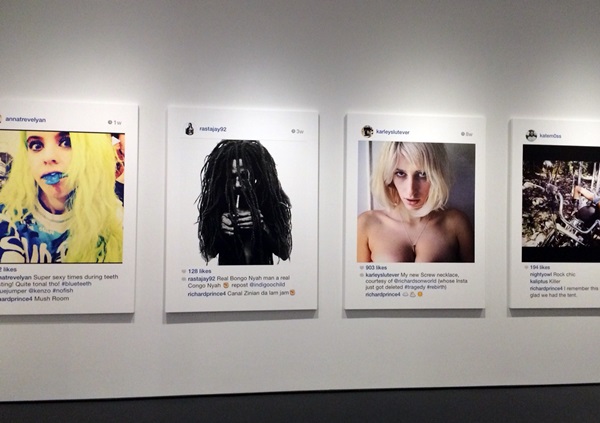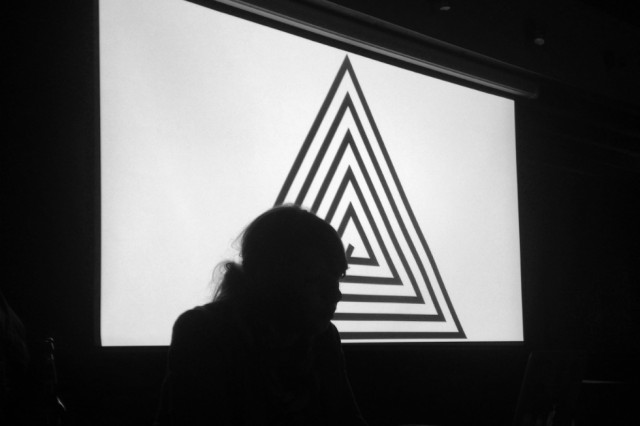Traversing The Digital Frontier: Lancaster Arts’ Network Agora — Reviewed
What is a 21st century art centre? And what part do networks play in their futures? Alix Medlyn Davies goes to Lancaster to find out from artists, producers, social media tutors and ‘algoravers’…
In a national climate that is considered to be increasingly hostile towards the arts, many contemporary art centres are currently exploring and reasserting their role within communities — with participants, artists and the arts ecology at large. Lancaster Arts (previously Live at LICA) is one: gaining a reputation for ‘testing-the-waters’ for the rest of the industry, it is based at Lancaster University, and supports talent through various practice-based commissions, encouraging Lancashire-based communities to get involved.
One of Lancaster Arts’ key contextual themes for 2015-18 asks: What is a 21st century art centre? What community-facing projects or participatory exhibition platforms might such a centre look to realise? In the third week of OPEN15′s month long season of programming, their Network Agora day was dedicated to answering just that: key themes pertinent to the future of Lancaster Arts’ identity; towards defining the arts centre; exploring artists and peer-to-peer exchange and socially engaged practice; and asking what part networks should play in it all.
Network Agora welcomed talks from Abandon Normal Devices (AND) Festival – who commission pioneering projects combining arts and tech — and artists who had travelled from as far away as Argentina and Australia. Perhaps unsurprisingly considering the future of the arts centre, discussions turned to digital as both tool and subject for artistic exploration, and how technology and art can act as powerful allies.
Ruth McCullough, senior producer of AND festival, noted that creating connections and networks between artwork and audience through technology would form a significant strand of the forthcoming edition of the festival in Grizedale Forest, Cumbria (18-20 September 2015). As AND Festival moves away from it’s traditional urban bases of Liverpool and Manchester, McCullough highlighted that the notion of networks in the absence of everyday connectivity (internet, cellular), which will this year provide an interesting focus for artistic investigation.

Using AND as an example, McCullough also highlighted the ways networks can provide huge potential for change in the traditional ways of learning, making, and in engineering new forms of organisation, representation and intervention. For instance, past AND commission Boarder Bumping by artist Julia Oliver invited visitors to question and actively contribute to re-drawing international boarders in the digital age. Through creating new mapping and tracking technology to manipulate national cellular telecommunications infrastructure, Oliver used networks to challenge politicised notions of space through individual participation: presenting networks as territories in themselves.
Marcus Lilley, founder of social media school Futrsocial, in turn demonstrated how both artists and online spaces are manipulating technology in new and affective ways to access new audiences. Sites such as Behance, Lilley said, allow emerging artists to carry around digital portfolios in their pockets; likewise, Google Cultural Institute assists people in exploring exhibitions and collections from museums and archives all around the world at the click of a button. More interestingly perhaps, Lilley also outlined some of the most striking work being produced on, or interacting with, digital social networks. The most well-known of these perhaps is artist Richard Prince, whose exhibition of over-sized Instagram images, or New Portraits, incited both great praise and great censure at Frieze New York in May of this year, and could recently be seen at London’s Gagosian Gallery .

Yet it is perhaps the ‘Social Media Socialism’ of Dutch artist Constant Dullaart makes the most thought provoking contribution to this growing arena of SMArt (Social Media Art). Dullaart’s work, such as High Retention, Slow Delivery, illustrate, in his own words, that “followers represent social capital, which has an influence on monetary capital. Artists post and sell work through Instagram, and they get picked up by galleries because of it. When the art world is active on Instagram it does mean something”.
As the Network Agora day approached night, a series of live digital art performances came as a welcome respite for minds buzzing with the afternoon’s open discussions. Joanne Scott’s Working Net provided a lively and interrogative space, exploring the intersections between networks and bodies. Both performance and participatory event, Scott invited attendees to move and manipulate physical objects projected onto a large screen. Using materials gathered from a variety of different networks — mixed, merged and assembled live into a ‘working net’ of image, sound, object and body – the live intermedial experiment brought the gathering to its feet and encouraged participants to influence a digital artwork using their own physicality.

Finally, as the day drew to a close, Lancaster Arts’ Peter Scott Gallery spaces began to pulse and reverberate with the sounds of electro and analogue synthesizers, as Mark Pilkington, Shelly Knotts and Norah Lorway headlined the late-night Algorave. There could not have been a more fitting way to end the day, as code-fuelled participants and newly arriving ravers danced the night away to Knott’s “wonky algorithmic glitches”.
As the arts in general continue to face an uncertain financial future, it seems explorations such as OPEN15, which locate and connect art centres within vast networks of digital and physical communities, will help traditional relationships — between artist, organisation and cultural consumer — transform and reboot. Lancaster Arts’ Network Agora allowed for contemporary practice, research and ideas to be reviewed and questioned in an open forum, providing fruitful sites for new and experimental collaboration: i.e., the formation of new networks.
As far as the Network Agora showed, the digital investigation and experimentation championed by organisations such as AND Festival, and it’s founders across the North-West — FACT (Liverpool), Home (Manchester) and Folly (Lancaster) — continue to play a vital role within the sector: pushing the boundaries of art and art-making; and questioning the way audiences in the 21st century are, and expect to be, engaged.
Alix Medlyn Davies
Alix attended OPEN15′s Network Agora on Sat 16 May 2015 at Lancaster Arts
Follow Alix (@pearlalix) and Lancaster Arts (@lancasterarts) on Twitter
Video courtesy Rob Battersby (@rjbattersby)
Keep an eye out for the next edition of Lancaster Arts’ OPEN series in 2016





